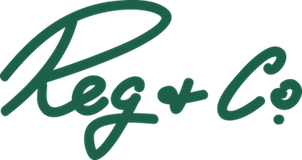At Reg & Co, one of the first questions we ask our clients is how do they measure the success of a brand partnership? When we partner brands with events such as Winter Wonderland in Hyde Park or broker sport, arts or business to business sponsorship agreements, it’s important for us to be able to prove that the campaign has achieved the objectives set. Things we encourage brands to consider before embarking on a sponsorship programme – is there a good fit – will the audience understand the partnership, is the audience relevant and on target, is there coverage that can provide awareness of the sponsorship, how can it engage existing and new customers, how can employees or stakeholders take part, is it about awareness, improved perceptions of the brand new product or service launch? In essence, in order to clarify the key objectives we need to measure, and be accountable for achieving them.
It should be easy to do. Never before have we had such connected consumers willing to tweet, comment, search and share their experiences when out and about. Consumers today expect brands to be meaningful and engaging, useful or entertaining and both business to business sponsorship programmes and business to consumer campaigns need to enhance the campaign or event.Sponsorship and experiential marketing offer the perfect platform to do this. But are we measuring it effectively? Research agencies can do a great job of understanding the quantitative and qualitative impact of a sponsorship, but for many of the tactical sponsorship campaigns undertaken there are few rights holders who will offer research as part of the campaign. We believe that for any longer term partnership research is a crucial piece – to justify continued investment and to ensure audiences, fans understand & appreciate the sponsorship giving a better understanding of how to evolve the sponsorship for all parties.
Results are measured a number of ways – footfall, brand tracking surveys, social media activity, visitor surveys etc. A combination of all the above gives a general indication of success.
One of the things I am most intrigued about is the technology that leads to accountability in other media, that hasn’t yet reached our marketing sector. Is there a way this can be relevant as a sponsorship measurement tool alongside current research methodology? Eye tracking and location based behaviour measurement via mobile technology are becoming common place in the digital out of home industry, but could also have a direct positive correlation on the growth of sponsorship and partner marketing and the sums brands are willing to invest in long term, non-sport, sponsorship activity.
Yes, partnership marketing is much more than just about being exposed to an ad.We need to take into account how the partnership manifests itself. If we are going down the full experiential marketing route, then technology will still only tell part of the story. But the ability to identify what true engagement looks like, and whether that engagement drove post exposure behaviour, should become a valuable metric for our industry.
Other industries have collectively driven forward standard tracking and accountability. It benefits the industry, so that it doesn’t undervalue its place on the marketing plan, but also helps brands make informed decisions about what activity will benefit their brand objectives.
